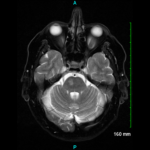Large vessel vasculitis (LVV) includes both giant cell arteritis (GCA) and Takayasu’s arteritis. Patients with LVV are occasionally treated with biological agents, but unfortunately, there is little evidence to support of the use of biological agents in this patient population, and current evidence is in the form of case series. In addition, both clinical trials and case studies are confounded by the variable definitions of disease remission used for LVV.
Mohammed Osman, MD, a rheumatologist at the University of Alberta in Canada, and colleagues recently published a systematic review and meta-analysis of the subject in PLoS One.1 They identified 25 studies that reported on the use of five biological agents to treat patients with LVV. The studies included three randomized controlled trials (RCTs) and 22 case series of at least two cases. An evaluation of the case series revealed that eight were of good quality, 12 were of fair quality, and two were of poor quality.
The authors concluded that results from RCTs suggest that anti-tumor necrosis factor (anti-TNF) agents (infliximab, etanercept and adalimumab) are not effective in inducing remission of LVV or reducing corticosteroid (CS) use in patients with LVV.
However, some case series suggest that two biological agents may be beneficial for patients with LVV. For example, case series reported that 75 patients achieved remission following treatment with tocilizumab (anti-interleukin 6 receptor) and were able to reduce their CS dose. Case series also suggest that infliximab may be effective in the management of refractory Takayasu’s arteritis.
Published papers describe a total of 95 patients with GCA and 98 patients with Takayasu’s arteritis who have received biological agents. The publications include studies of patients with GCA who were treated with infliximab (35.6%), adalimumab (35.6%), tocilizumab (20%) and etanercept (8.4%). Patients with Takayasu’s arteritis were primarily treated with infliximab (76.5%), followed by tocilizumab (11.2%), etanercept (5.1%), rituximab (5.1%) and adalimumab (2.0%). Most of the patients (>75%) were female. Patients with GCA ranged in age from 58 to 85 years. As expected, patients with Takayasu’s arteritis were younger, ranging in age from 7 to 48 years.
All three published RCTs were funded or supported by pharmaceutical companies. Dr. Osman and colleagues determined that two of them were assessed as having a low risk of bias. The trials had poor applicability to patients with GCA, however, because the trial protocol included steroid tapering regimens that were rapid and not reflective of the more prolonged course of CS typically required by patients with GCA. One trial had a high risk of bias due to selection bias and attrition bias.
An example of the conflicting data identified by Dr. Osman and colleagues is revealed by closer examination of the published studies on the effects of infliximab on LVV.
One of the RCTs included patients who were newly diagnosed (< 4 weeks) with GCA and responded to CS prior to randomization into one of two groups: infliximab plus CS or CS plus placebo. The investigators found no difference between the two groups with regard to the number of patients that relapsed or the number of patients that had a reduction in their CS doses.
By contrast, two cases series of patients with GCA (total of six patients) revealed a modest benefit from infliximab, with five patients (83%) achieving both remission and reduction of CS doses. In addition, of the 11 case series of patients with Takayasu’s arteritis (total of 75 patients) who were treated with infliximab, 74.7% documented remission and 32% discontinued CS therapy during follow-up. While the results from the case series are promising, the small case series were clinically heterogeneous with many biases and limitations. (posted 3/13/15)
Lara C. Pullen, PhD, is a medical writer based in the Chicago area.

